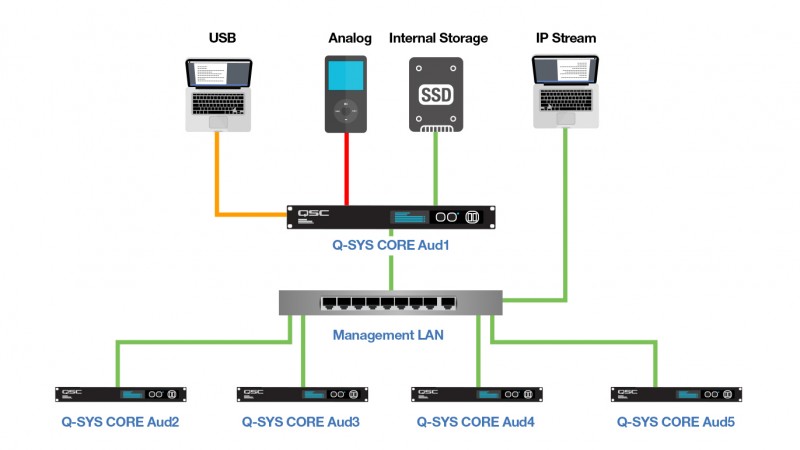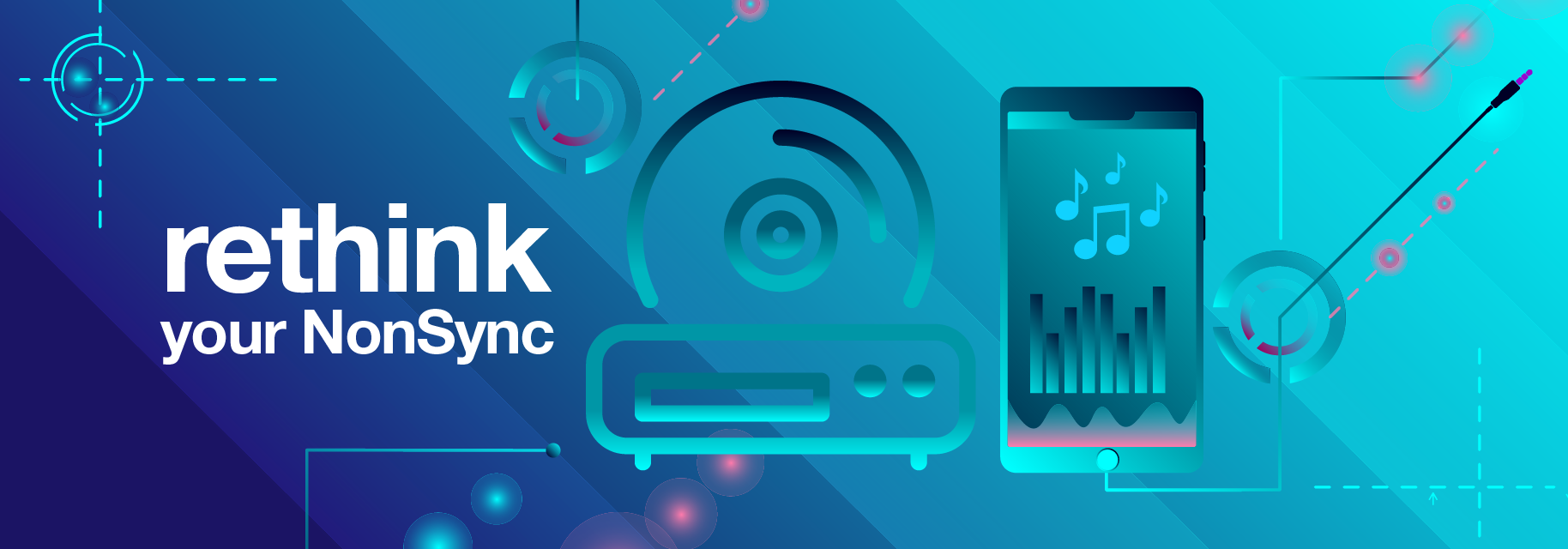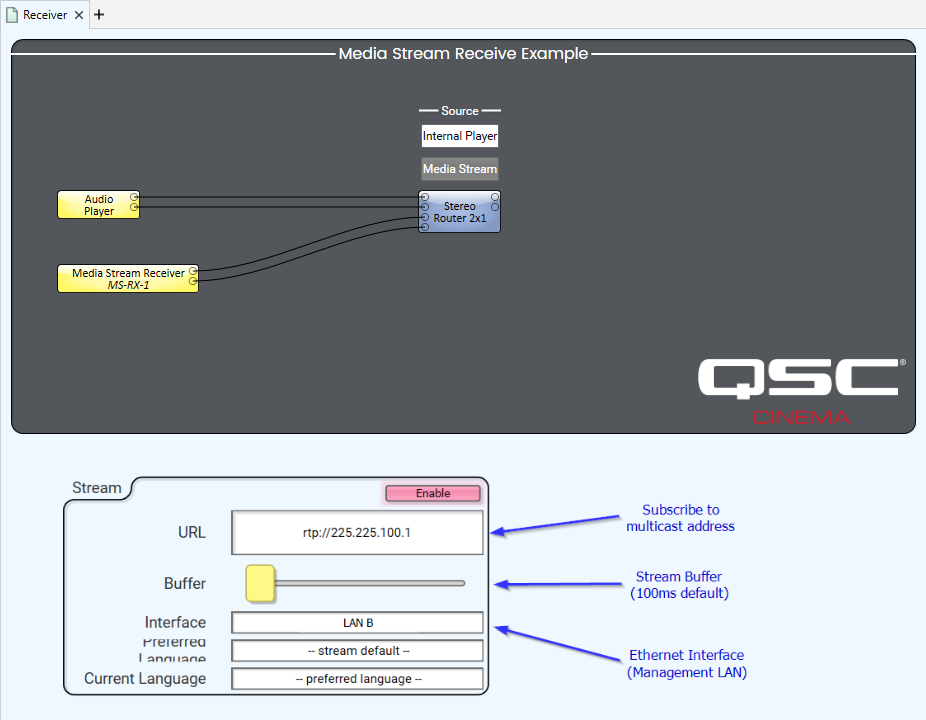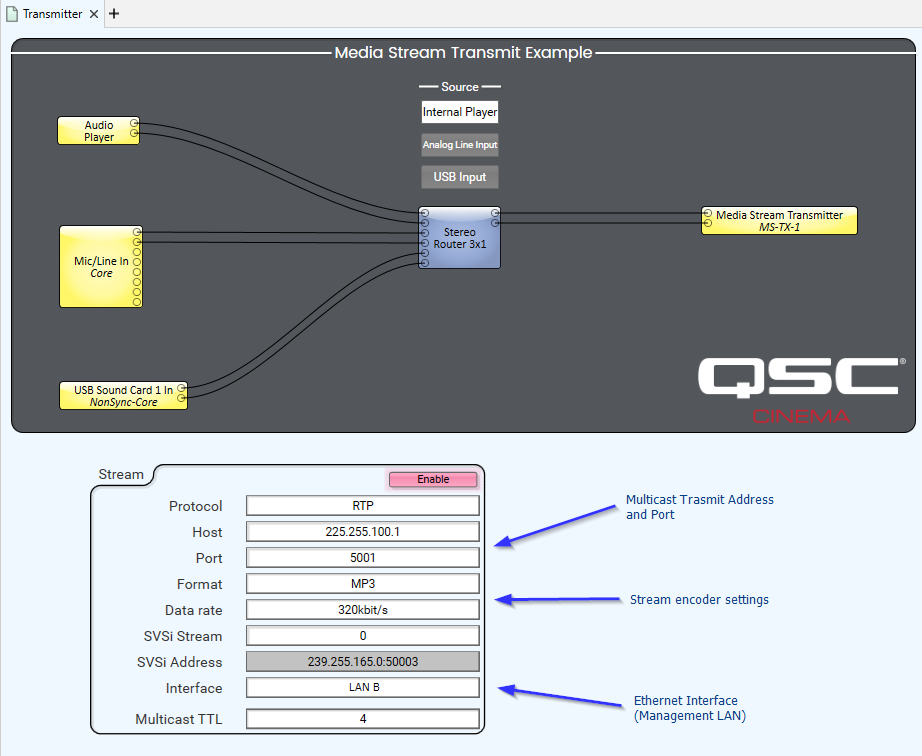Alternative Methods for Distributing Pre-Show Audio
It’s not uncommon to insert some pre-show music into the auditorium to kill the awkward silence before the trailers roll. Classic methods for delivering music to the audience as pre-show filler have been to put a local CD/MP3 player at each auditorium or to have a centralized player and distribute the unbalanced signal with transformer based distribution hardware. Input methods to the cinema sound processors are typically unbalanced analog stereo signals over RCA connections or 3.5mm stereo jacks. This has been the way to handle preshow for a long time, but it’s not uncommon to battle with hum and buzz from the distributed input signal. Traditional non-sync systems rely on a structure of analog audio cable which may be poorly shielded and susceptible to interference from electrical equipment such as lighting dimmers and projector power supplies.
Let’s consider another method, one that likely doesn’t require pulling any new wire. In any digital multiplex there already exists a common link between all auditorium equipment – the management Ethernet network. What if we could broadcast digital audio on this local area network? What if our cinema audio processor could be its own music player? Then we wouldn’t have to worry about hums and wouldn’t need extra playback equipment or distribution boxes.
Q-SYS Core processors are capable audio playback devices used for background music distribution (BGM) in large scale venues like theme parks, casinos, and hotels. Let’s explore some of the features that can help us in the quest for better non-sync in a cinema.
Any Q-SYS Core model can store digital audio files internally, handle playlist management, and support a variety of file types (WAV, MP3, FLAC). Even more, they can either transmit or receive multicast audio streams, so one Q-SYS Core could stream out to many others. Or a computer with software like VLC Media Player running could be used to transmit multicast audio to a multiplex full of Q-SYS Cores that are subscribed. You can even pass audio into a Core with USB and transmit that signal out.
An added benefit of the networked distributed audio system is the ability to integrate paging and communications to the facility. A single microphone can easily be broadcast through the network and deliver audio to any endpoint.
Just because you’ve delivered your non-sync audio in a traditional way (maybe even since it became a tradition) doesn’t mean you shouldn’t explore the Q-SYS option. Take a look at this video and see if the Q-SYS audio player and Core processor might end your quest for better non-sync.
Click here to view the Q-SYS Design file for easier implementation.




563815 553401Exceptional blog here! Additionally your internet website rather a whole lot up quick! What host are you utilizing? Can I get your affiliate hyperlink for your host? I wish my site loaded up as fast as yours lol. 190894
717562 837216I feel 1 of your ads triggered my internet browser to resize, you may want to put that on your blacklist. 99879
359281 666472So funcy to see the write-up within this blog. Thank you for posting it 654533
672093 244824Youre so cool! I dont suppose Ive read anything in this way before. So good to uncover somebody with some original suggestions on this subject. realy appreciate starting this up. this superb website is something that is required over the internet, a person if we do originality. valuable function for bringing something new towards the web! 986563
Мне понравилась объективность автора и его способность представить информацию без предвзятости.
Автор представляет информацию, основанную на исследованиях и экспертных мнениях.
online prescriptions without a doctor
Автор предлагает аргументы, подкрепленные проверенными источниками.
Я очень доволен, что прочитал эту статью. Она не только предоставила мне интересные факты, но и вызвала новые мысли и идеи. Очень вдохновляющая работа, которая оставляет след в моей памяти!
Hello there! This post could not be written much better! Looking at this post reminds me of my previous roommate! He always kept preaching about this. I am going to send this information to him. Fairly certain he will have a good read. Many thanks for sharing!
Я прочитал эту статью с большим удовольствием! Она написана ясно и доступно, несмотря на сложность темы. Большое спасибо автору за то, что делает сложные понятия понятными для всех.
Автор представляет сложные понятия в понятной и доступной форме, что помогает читателю лучше понять тему.
canadian drugs without any prescriptions
canadian pharmacies recommended by aarp
canadian pharcharmy online viagra
canadian discount pharmacy
Я просто восхищен этой статьей! Автор предоставил глубокий анализ темы и подкрепил его примерами и исследованиями. Это помогло мне лучше понять предмет и расширить свои знания. Браво!
Статья содержит разнообразные факты и аргументы, представленные в объективной манере.
Статья содержит информацию, подкрепленную надежными источниками, представленную без предвзятости.
Its like you read my mind! You appear to know so much about this, like you wrote the book in it or something. I think that you can do with some pics to drive the message home a little bit, but instead of that, this is magnificent blog. A fantastic read. I will definitely be back.
Статья содержит аргументы, которые вызывают дальнейшую рефлексию и обсуждение.
Автор статьи представляет информацию без предвзятости, предоставляя различные точки зрения и факты.
Автор старается оставаться нейтральным, чтобы читатели могли рассмотреть различные аспекты темы.
continuously i used to read smaller articles which as well clear their motive, and that is also happening with this post which I am reading at this place.
This piece of writing is genuinely a pleasant one it assists new internet users, who are wishing in favor of blogging.
I like looking through a post that can make men and women think. Also, thanks for allowing me to comment!
Автор представил широкий спектр мнений на эту проблему, что позволяет читателям самостоятельно сформировать свое собственное мнение. Полезное чтение для тех, кто интересуется данной темой.
Подача материала является нейтральной и позволяет читателям сформировать свое собственное мнение.
cheapest canadian pharmacy